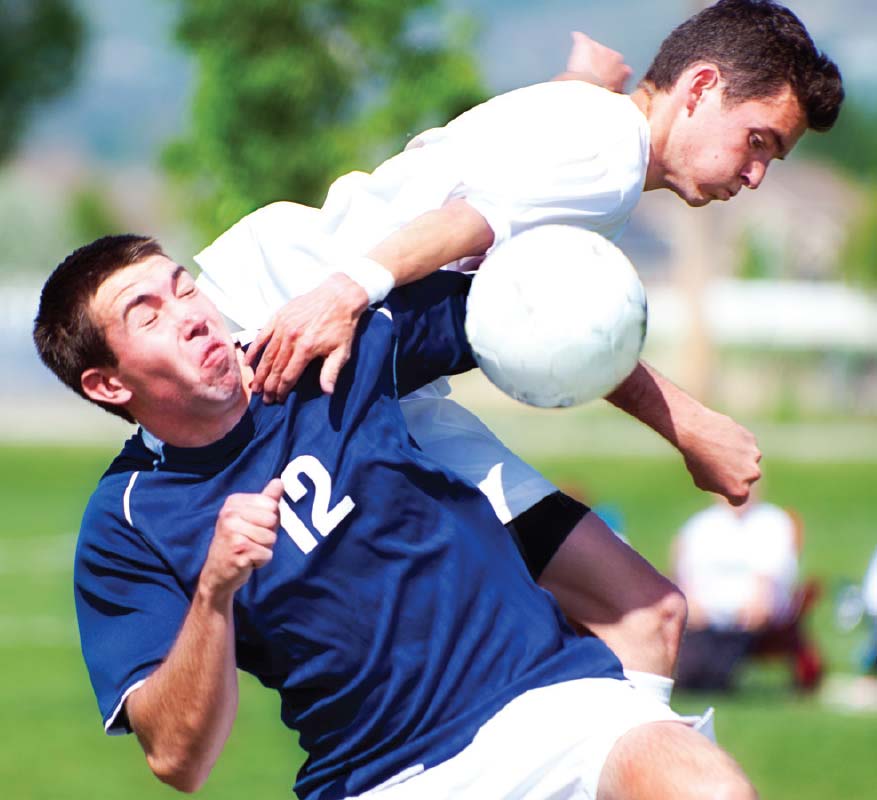When a Tooth Is Knocked Out
How to Increase the Chances of Saving the Tooth
Dear Doctor,
My teenage son recently had a tooth knocked out during a basketball game. The dentist replanted the tooth but told us it may not permanently survive because it had been out too long. What could we have done differently?
Dear Carrie,
Thank you for your question, and I wish your son the best with his long-term prognosis. Your dentist, however, is right. Although your son’s tooth was able to be replanted in its socket, it’s likely that its roots will eventually dissolve (resorb) and the tooth will be lost. Here’s why:
 |
Teeth are held in place by an elastic tissue called the periodontal ligament, which attaches the tooth to the bone and provides nerve sensation and blood supply. When a tooth is knocked out, many periodontal cells remain on the root. As long as those cells remain alive, they can regenerate once the tooth is reinserted in the socket.
But the longer the tooth is out of the socket, the more likely these cells will desiccate (dry out) and die. Then, even if the tooth is replanted, the bone will fuse directly to the root, without the periodontal ligament. This will cause the tooth root to gradually resorb, leading to tooth loss. However, if you act quickly after a tooth has been knocked out, you have a much better chance of saving it.
Act Quickly
Chances of a tooth’s survival increase if it can be reinserted into the empty socket within 5-20 minutes after the injury—and the earlier, the better. Reinsertion doesn’t require extensive training; it’s a matter of following five simple steps:
- First, locate the tooth and pick it up without touching the root, as this is where the delicate periodontal cells are.
- Rinse the tooth with clean water to remove any debris.
- Hold the tooth by the crown (the visible part of the tooth) and insert the root end into the empty socket. This will require some pressure, so don’t hesitate to use some force.
- Place a piece of clean gauze or cloth between the inserted tooth and its counterpart in the other jaw, and have the injured person bite down gently and hold their bite.
- Obtain dental or medical care right away.
The International Association of Dental Traumatology (IADT) has developed a free mobile app to guide you through various dental emergencies, including a knocked-out tooth. Available in both Android and IOS app stores, ToothSOS gives illustrated, step-by-step care instructions for each type of injury.
If for whatever reason you can’t reinsert the tooth, place the tooth in a container with milk and take it to the dentist right away. If no milk is available where the injury occurred, run don’t walk to the nearest convenience store (or coffee shop or grocery store) to get some. Keep in mind that every minute counts, and the first 5-20 minutes are critical when it comes to saving a tooth. You can also use a pre-filled container like Save-A-Tooth™ that can be kept in your first aid kit. Though not as effective as reinsertion, transporting the tooth in liquid is much better than letting it dry out.
Seek Professional Care
Once you’ve secured the tooth, you should promptly take the injured person to a dentist—or an emergency facility if your dentist isn’t immediately available. Even if you do get help at the emergency room, you should still see your dentist as soon as possible.
The dentist will normally take a radiograph of the tooth to make sure it’s correctly positioned. If it’s out of position, the tooth can be adjusted—and splinting the tooth will keep it secure until it fully reattaches with the remaining ligament, bone and gum tissue. It will likely be necessary, depending on the patient’s age, to perform a root canal treatment within those two weeks. The procedure removes the inner pulp tissue and then fills the empty space and root canals with a special material. Root canal treatment can prevent a possible infection that could jeopardize the tooth’s survival.
Dentists typically want to reinsert a tooth even if it has been out of the mouth several hours. The tooth may actually survive a few years, which can buy time until it’s appropriate to perform a permanent restoration. This is especially the case when considering the age and growth of the patient. Although dental implants are widely considered the preferred tooth replacement method, they shouldn’t be placed until the jaw has fully matured in early adulthood.
Guarding Against Future Injury
In the future, your son can lower his risk of injury during basketball (or other contact sports) by wearing a mouthguard while playing. A custom-fitted mouthguard, made by your dentist, provides a precise fit that’s not only more comfortable but also more protective against dental injury than over-the-counter mouthguards.
Prevention, quick action and follow-up care are the keys to minimizing tooth loss resulting from a knocked-out tooth. Following these guidelines will help ease the long-term effects of this kind of traumatic tooth injury.





